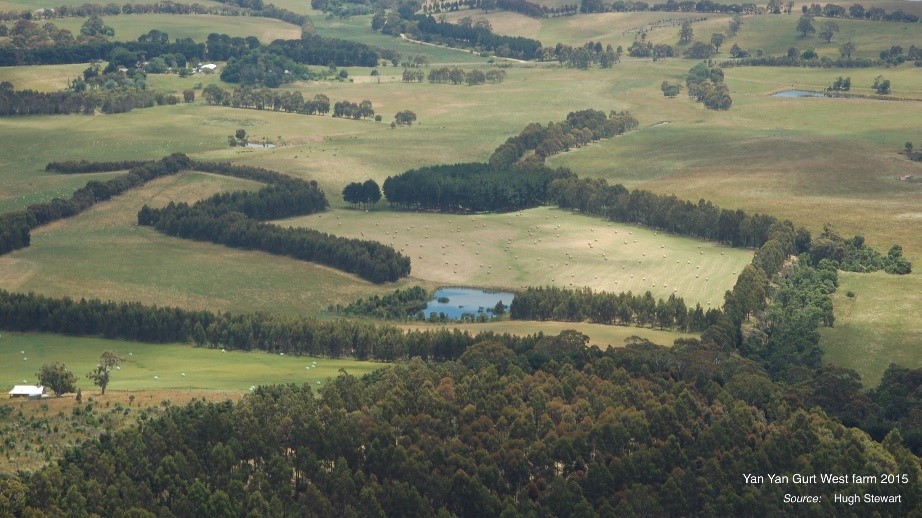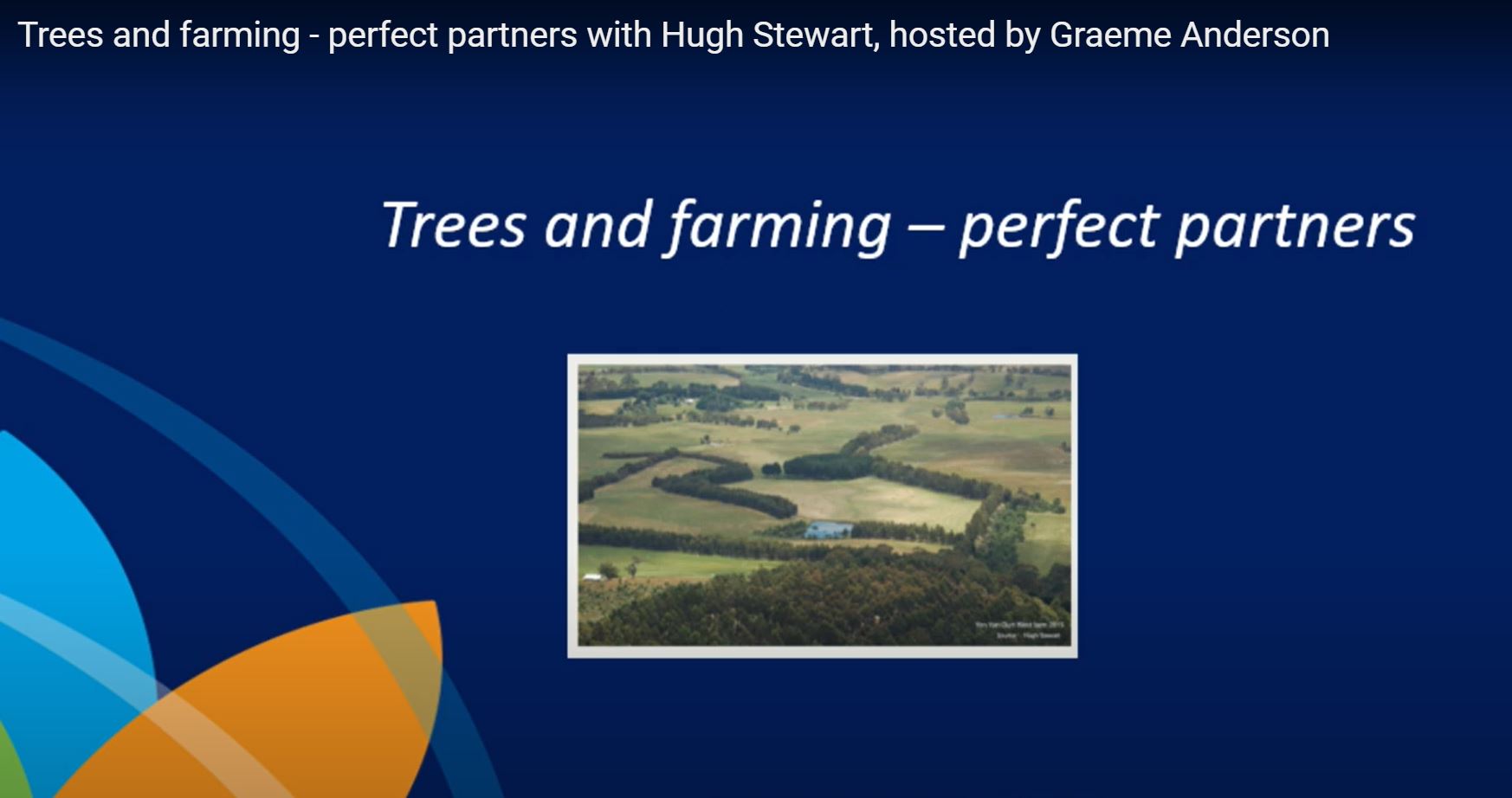
Tree planting on farms can significantly reduce greenhouse gas emissions and contribute to the Australian Red Meat Industry’s CN30 goal of being carbon neutral by 2030. Trees on farms also provide other benefits. However, accessing relevant and reliable information on the co-benefits or impacts of trees on farms and incorporating this into complex tree planting decisions is challenging. This project addressed these issues by developing a better understanding of the benefits and risks associated with integrating trees into farm enterprises, and by providing ways to include this information in decision making.
The project included a literature review, interviews with beef, sheep and dairy farmers in southeastern Australia, and modelling of greenhouse gas emissions from agricultural enterprises and carbon abatement associated with tree planting on three case study farms in Victoria. The case studies also allowed for an analysis of the biophysical and economic benefits of incorporating trees into farming systems. All aspects of the project as well as outreach to farmers and partners have been used to develop a framework for decision making about trees on farms.
 The literature review and interviews were the first phase of the project. This allowed for identification of the case study farmers and informed the development of the decision framework. The main messages from the literature review and interviews are summarised in the information summaries (see Output).
The literature review and interviews were the first phase of the project. This allowed for identification of the case study farmers and informed the development of the decision framework. The main messages from the literature review and interviews are summarised in the information summaries (see Output).
The case study farms each had a carbon audit including the estimated sequestration associated with existing trees on the farm and together with future tree planting scenarios. Costs of the tree planting scenarios were estimated and compared to the expected productivity co-benefits to the agricultural enterprise. In the case of prime lamb sheep enterprises, biophysical modelling was done to estimate the extra lambs produced with shelter and the modelled results were incorporated into an economic analysis of the probability of receiving a 10% per annum return on investment with the tree planting.
An initial phase of this project was funded by a Research Grant from the Tasmanian Climate Change Office. The primary funders were the Victorian Department of Energy, Environment and Climate Action (DEECA) and Meat and Livestock Australia’s donor company as part of the CN30 research package. Representatives from MLA and DEECA served on the Reference Group along with representatives from Agriculture Victoria and Private Forest Tasmania. University of Melbourne primary researchers associated with the project were:
| Name | Role |
|---|---|
| Dr Rachelle Meyer | Project management, interviews, biophysical modelling, farm GHG audit, outreach. |
| Dr Hugh Stewart | FullCAM modelling, Trees on farm expertise |
| Dr Kaitlyn Height | Interview analysis |
| Prof. Richard Eckard | GHG and agricultural expertise |
| Prof. Rod Keenan | Chief Investigator |
The project would not have been possible without the contribution of the 42 farmers interviewed from New South Wales, South Australia, Victoria, and Tasmania. Three farmers in Victoria and another in Tasmania provided substantial amounts of time and data to assist the project. These were Dunkeld Pastoral Company, Smith Graziers, Carney Family Partnership, and St. Peter’s Pass
This project collaborated with many organisations for research purposes. One of the case studies was also a Nexus project case study and another was part of the Integrated Management System Project. The emissions calculations of these farms were calculated by Brendan Cullen and Ainsley MacDonald, respectively. Data and support particularly on the impacts of shelter on micro-climate and pasture production was shared by Thomas Baker and Daniel Mendham at the Perennial Prosperity project. Karen Christie and Matt Harrison at University of Tasmania, Jane Court at Agriculture Victoria, and Neville Hermann at the CSIRO provided support with GrassGro Modelling. We also have been in contact with researchers working on this topic at Murdoch University, Western Australia’s Department of Primary Industries and Regional Development, University of Wollongong, and Queensland University of Technology.
Interview participant recruitment, data collection, and outreach support were provided by many collaborators. A field day at the case study farm in Dunkeld would not have been possible without the help from the Glenelg Hopkins Catchment Management Authority, Nature Glenelg Trust, and the Otway Agroforestry Network. VicForests collaboration allowed for improved outreach including attending Gippsland Field Days. Similarly, Landcare Victoria and ANU’s Sustainable Farms provided opportunities to share draft outputs with landowners. Partnership with Agrista, Pinion Advisory, Yarra Ranges Shire Council, East Gippsland Shire Council, Southern Farming Systems, Green Triangle Forest Industries Hub, PF Olsen, Private Forestry Tasmania, and MLA were important in connecting us with the farmers that participated in the project. We also have opportunities for outreach through Agriculture Victoria, Golden Broken Catchment Management Authority, The Longwood Plains Conservation Management Network, SA Limestone coast landscape board, and Landcare networks including Holbrook, Broken Catchment, Basalt to Bay, Heytesbury and the Victorian Landcare Network.
The primary outputs from this project are the decision framework, the results of the interviews, and the results of the case study analysis including the carbon sequestration, net farm emissions, biophysical modelling and economic analysis. Highlights of the interviews and in the case study analysis are included in the content of the decision framework. Links to the different components of the decision framework are below. More detailed results documents will be posted here when they are available.
For those starting out or updating their farm plan there is a tree planting guide. This guide is associated with an
The decision matrix is a process to think through decisions that are influenced by several factors of varying importance. It is particularly useful for demonstrating your decision making process to partners, for collaborative decision making, and allows for updating the decision making process with new information. There is a video describing the process

with Hugh Stewart, hosted by Graeme Anderson
For more information please email Dr Rachelle Meyer
